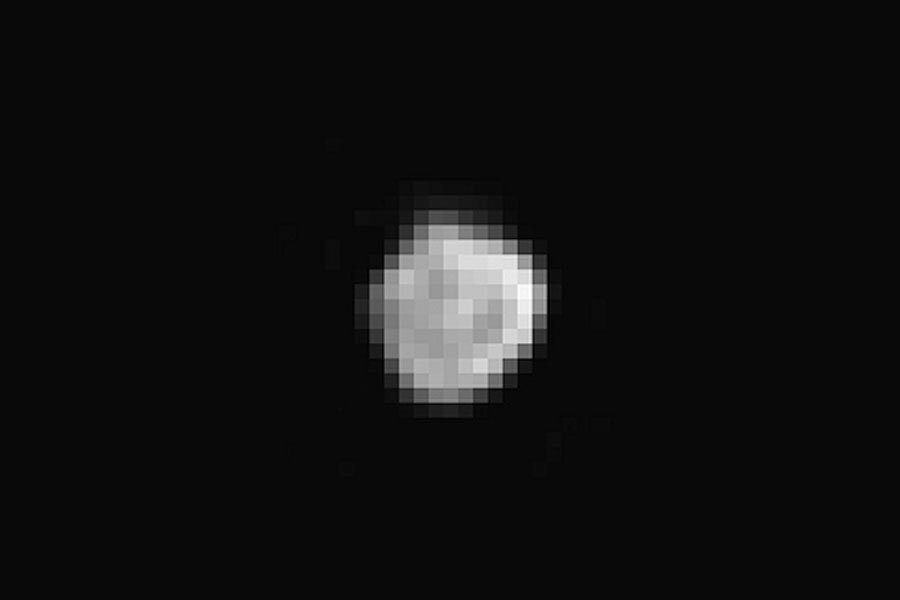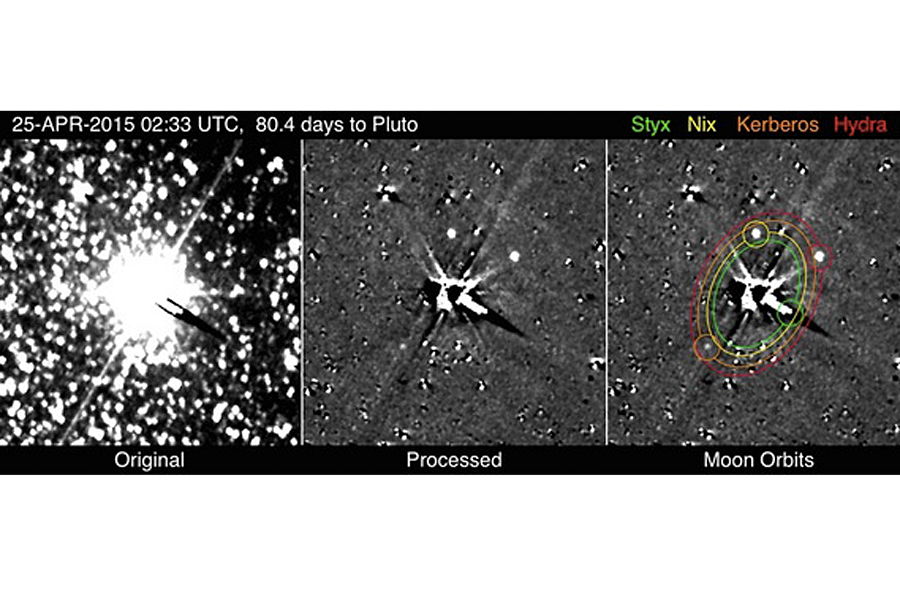Slick Nix pics depict bricks
Loading...
The middle child of Pluto's moon family, Nix, has been given its close up by the New Horizons space probe.
The first close-up image of Nix snapped by the New Horizons probe seems a little fuzzy compared with the stunning photos of Pluto and Charon, but that's because Nix is only 25 miles (40 kilometers) wide — and, in fact, the measurement of its diameter is one of the major pieces of information that the spacecraft science team has managed to glean from the new portraits of the satellite.
Named after the Egyptian goddess of night and darkness, Nix orbits Pluto right between its four siblings: Charon and Styx orbit closer to Pluto, while Kerberos and Hydra orbit further out. Previous estimates of its size ranged from 20 to 60 miles (32 to 96 km) wide.
While the new image may appear to be rather low resolution, past observations of Nix have shown little more than a speck of light around Pluto. In reference to the quality of the Nix image, Alan Stern, New Horizons' principal investigator, said in a media briefing Friday (July 17), "Let's set our expectations properly: As little as three months ago, we didn't have pictures of Pluto this good. And this is actually about as many pixels as the best Earth-based views of Pluto."
Stern added that more images of Nix will be coming from New Horizons, but in the meantime, the team gathered a few more details about it.
"We're able to measure its brightness: it's intermediate in brightness between Charon and Pluto," Stern said. "It's about twice as narrow in one direction as it is long and we're kind of looking down the barrel of it right there. We'll have more to say about Nix when we get more imagery on the ground. But a fascinating satellite."
The image was taken by New Horizons' Long Range Reconnaissance Imager (LORRI), and shows features as small as 4 miles (6 km) across. It was acquired on Monday (July 13) before the probe's closest approach to Pluto on Tuesday morning (July 14), at a distance of about 360,000 miles (590,000 kilometers) from Nix.
Follow Calla Cofield @callacofield. Follow us @Spacedotcom, Facebook and Google+. Original article onSpace.com.
- Pluto Quiz: How Well Do You Know the Dwarf Planet?
- New Horizons Probe's July 14 Pluto Flyby: Complete Coverage
- Photos of Pluto and Its Moons
Copyright 2015 SPACE.com, a Purch company. All rights reserved. This material may not be published, broadcast, rewritten or redistributed.






